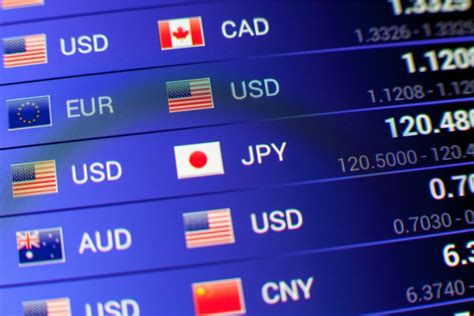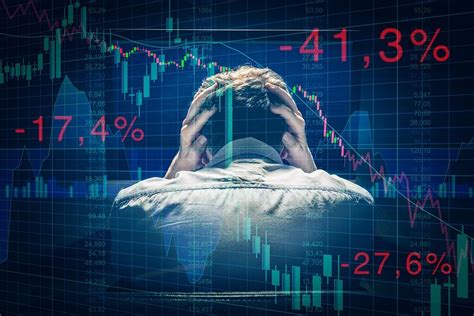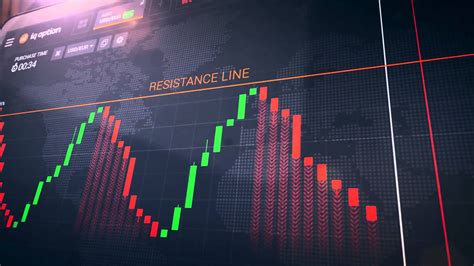Table of contents
Navigating the forex market requires a combination of strategy, risk control, and an understanding of key financial principles. Learning how to forex trade involves more than just buying and selling currency pairs—it requires mastering leverage, margin, and risk management to avoid unnecessary losses. Many traders enter the market without fully realizing how leverage amplifies both gains and risks or how margin requirements influence trade execution. Without effective risk management strategies, even the most promising trades can lead to significant financial setbacks. Gaining a solid foundation in these areas ensures a structured and disciplined approach to trading, increasing the chances of long-term success.
Forex Trading Fundamentals
Understanding the foundation of forex trading is essential for long-term success. Currency pairs determine trade structure, order types impact execution strategies, trading platforms provide essential tools, and economic events influence market movements. Mastering these elements enhances decision-making and helps traders navigate the complexities of the forex market.

Understanding Currency Pairs
Base and Quote Currencies
Every forex trade involves a currency pair, consisting of a base currency and a quote currency. In EUR/USD, EUR represents the base currency, while USD functions as the quote currency. The exchange rate reflects how much of the quote currency is required to purchase one unit of the base currency.Major, Minor, and Exotic Pairs
Major Pairs: The most liquid pairs, including EUR/USD, GBP/USD, and USD/JPY, feature stable price movements and tight spreads.
Minor Pairs: These include non-USD pairs, such as EUR/GBP and EUR/JPY, which have moderate liquidity but higher spreads.
Exotic Pairs: Combining a major currency with an emerging market currency, such as USD/TRY or EUR/ZAR, exotic pairs experience higher volatility and wider spreads.
Traders assess currency pair selection based on volatility, trading strategy, and spread costs to optimize performance in different market conditions.
Order Types in Forex Trading
1. Market Orders vs. Limit Orders
Market Orders: Execute immediately at the best available price, often used for high-liquidity pairs like EUR/USD.
Limit Orders: Specify an exact entry or exit price, allowing traders to control execution price but not execution certainty.
2. Stop Orders and Stop-Limit Orders
Stop Orders: Convert into market orders once a specific price is reached, helping traders catch breakouts.
Stop-Limit Orders: Execute only at the set price or better, offering price control but risking non-execution.
Executing orders correctly prevents unnecessary slippage and ensures alignment with strategy, whether scalping on M1 timeframes or swing trading on H4.
Key Forex Trading Platforms
MetaTrader 4 (MT4) and MetaTrader 5 (MT5) are the most widely used platforms, but alternatives like cTrader and TradingView offer unique advantages. The comparison below outlines the differences:
| Platform | Best For | Key Features | Drawbacks |
|---|---|---|---|
| MetaTrader 4 | Retail forex traders | Custom indicators, Expert Advisors, low system requirements | Lacks native multi-asset support |
| MetaTrader 5 | Multi-asset trading | Depth of Market, faster execution, improved charting | Limited backward compatibility with MT4 |
| cTrader | Advanced traders | ECN trading, depth of market, advanced order types | Less broker support |
| TradingView | Technical analysis | Cloud-based, community-driven indicators, multi-platform access | No direct trade execution with all brokers |
Selecting the right platform depends on trading objectives, preferred execution speed, and technical analysis requirements.

How Economic Events Impact Forex Markets
Economic events drive market volatility, influencing currency pair movements in real time.
Non-Farm Payroll and Interest Rate Decisions
Non-Farm Payroll (NFP): Released monthly by the U.S. Bureau of Labor Statistics, this report impacts USD pairs like EUR/USD and USD/JPY. Higher job growth strengthens the dollar, while weak data often triggers a sell-off.
Interest Rate Decisions: Central banks, such as the Federal Reserve and the European Central Bank, adjust interest rates based on inflation and economic growth. Higher rates typically boost a currency's value by attracting foreign investment.
Inflation Rates and GDP Growth Reports
Inflation Data: Consumer Price Index (CPI) reports influence monetary policy. Rising inflation pressures central banks to raise interest rates, which strengthens currency values.
GDP Growth Reports: A higher GDP growth rate signals economic expansion, increasing demand for a nation's currency. Weak GDP results often lead to central bank stimulus, weakening the currency.
Understanding the correlation between economic reports and market reactions enables traders to anticipate price movements and position trades accordingly.
Leverage, Margin, and Position Sizing
Forex trading involves borrowed capital, requiring a deep understanding of leverage, margin, and position sizing. Misuse of leverage leads to excessive risk, while margin determines trade sustainability. Calculating position size accurately aligns trading strategies with account equity. Regulatory policies influence leverage limits, ensuring market stability.
What is Leverage in Forex Trading?
Leverage allows traders to control larger positions with a smaller capital outlay, multiplying potential gains and losses.
Amplification of Profits and Losses
A $1,000 account with 1:100 leverage allows control of a $100,000 position.
A 1% price move results in a $1,000 gain or loss, equal to the entire account balance.
Higher leverage increases market exposure but also heightens liquidation risks.
Common Leverage Ratios
1:50 – Standard for U.S. traders due to regulations.
1:100 – Popular among retail traders seeking balance between risk and reward.
1:500 – Offered by offshore brokers, suitable for short-term strategies like scalping.
Utilizing appropriate leverage ensures capital preservation and long-term trading sustainability.
Margin Requirements and Free Margin
Margin represents the collateral required to open leveraged positions. Mismanaging margin results in liquidation, making it essential to understand key concepts.
| Margin Term | Definition | Impact on Trading |
|---|---|---|
| Initial Margin | Minimum deposit required to open a position. | Prevents excessive risk exposure. |
| Maintenance Margin | Minimum funds required to keep a trade open. | If breached, results in a margin call. |
| Margin Call | Broker demand for additional funds due to insufficient equity. | Occurs when margin level falls below required threshold. |
| Free Margin | Available capital for opening new trades. | Affected by floating profits and losses. |
| Margin Level (%) | (Equity ÷ Used Margin) × 100 | Below 100% signals potential liquidation. |
Understanding these elements ensures traders maintain sufficient margin to withstand market volatility.
Position Sizing and Risk Exposure
Determining position size involves calculating lot sizes based on account equity and risk tolerance.
Calculate Risk Per Trade
Set a percentage of capital at risk, typically 1-2% per trade.
Determine Stop-Loss Distance
Measure pip distance using technical analysis.
Use Position Sizing Formula
Position Size = (Account Equity × Risk %) ÷ Stop-Loss Distance
Adjust for Leverage
Higher leverage reduces margin requirements but increases exposure.
Apply to Different Strategies
Scalpers use tighter stops and larger lot sizes, while swing traders opt for smaller positions and wider stops.
Correct position sizing prevents excessive drawdowns and ensures risk remains within acceptable limits.
Margin and Leverage in Different Timeframes
Short-term traders utilize leverage differently compared to long-term traders, adjusting margin requirements accordingly.
Scalping and Day Trading
Use M1, M5, and M15 timeframes.
Require high leverage (1:100 to 1:500) for quick profits.
Tight stop losses to limit risk.
Swing and Position Trading
Operate on H4, D1, and W1 timeframes.
Lower leverage (1:10 to 1:50) due to extended holding periods.
Require higher margin to absorb price fluctuations.
Selecting leverage based on trading style ensures proper risk management and capital efficiency.

Regulations on Leverage and Margin
Leverage and margin requirements vary across jurisdictions, impacting trader accessibility and risk exposure.
United States
Maximum leverage: 1:50 for major pairs, 1:20 for minors.
Regulated by the Commodity Futures Trading Commission (CFTC) and National Futures Association (NFA).
European Union
Maximum leverage: 1:30 for retail traders.
Regulated by European Securities and Markets Authority (ESMA).
United Kingdom
Follows ESMA rules under Financial Conduct Authority (FCA).
Australia
Maximum leverage: 1:30 for retail traders.
Regulated by Australian Securities and Investments Commission (ASIC).
Brokers implement these regulations to ensure trader protection and market stability.
Risk Management in Forex Trading
Managing risk is the foundation of successful forex trading. Without effective stop-loss and take-profit strategies, capital can erode quickly. Risk-reward ratios ensure profitability, while avoiding common mistakes prevents unnecessary losses. Understanding these elements leads to controlled and sustainable trading.
Stop Loss and Take Profit Strategies
Effective risk management begins with placing stop-loss and take-profit levels at optimal positions.
Setting Optimal Stop-Loss Levels
Technical Stop-Loss: Based on Support and Resistance, Moving Averages, or Fibonacci Retracement levels.
Volatility-Based Stop-Loss: Uses ATR (Average True Range) to adapt to market fluctuations.
Percentage Stop-Loss: Sets risk as a fixed percentage of account balance, typically 1-2%.
Using Trailing Stops for Trade Protection
Fixed Trailing Stop: Moves by a predetermined number of pips.
ATR-Based Trailing Stop: Adjusts dynamically based on market volatility.
Break-Even Stop: Adjusts stop-loss to entry price after a trade moves into profit.
Applying stop-loss and take-profit strategies reduces emotional decision-making and protects capital from market volatility.
Risk-Reward Ratio and Money Management
A strong risk-reward ratio ensures profitability even when some trades result in losses.
| Risk-Reward Ratio | Win Rate Required for Profitability | Common Application |
|---|---|---|
| 1:1 | 50% | Used in scalping and short-term trades. |
| 1:2 | 33% | Minimum recommended ratio for sustainable trading. |
| 1:3 | 25% | Favored by swing traders for long-term consistency. |
| 1:5 | 17% | Used in trend-following strategies with larger stop-losses. |
Risk Per Trade: Calculating risk as a percentage of capital (1-2%) ensures steady account growth.
Compounding Effect: Profitable risk-reward strategies allow for reinvesting gains and increasing position sizes without increasing risk.
Avoiding Overexposure: Proper money management prevents excessive losses, ensuring long-term survival in the forex market.
A disciplined approach to risk-reward ratios and position sizing leads to consistent trading performance.
Common Risk Management Mistakes
Ignoring risk control leads to rapid account depletion. Recognizing common mistakes helps traders develop better risk strategies.
Overleveraging
High leverage (1:500) increases exposure but also magnifies losses.
Using more than 10% margin per trade can trigger forced liquidation.
Revenge Trading
Emotional decision-making after a loss leads to reckless trading.
Sticking to a structured plan prevents impulsive actions.
Ignoring Fundamental Market Risks
Non-Farm Payroll, Interest Rate Decisions, and GDP Growth create market spikes.
Failing to account for news events results in unexpected stop-outs.
Poor Risk-to-Reward Allocation
Setting a 1:1 ratio reduces profit potential.
Aiming for at least a 1:2 risk-reward ratio ensures long-term gains.
Avoiding these mistakes enhances trading discipline and improves profitability.
Trading Strategies and Technical Indicators
Choosing the right trading strategy depends on market conditions, risk tolerance, and time commitment. Technical indicators like Moving Averages, RSI, and MACD help identify trends and momentum. Support and resistance levels guide entry and exit points, while scalping strategies focus on short-term opportunities. Economic news events create volatility, affecting market sentiment and trade execution.
Day Trading vs. Swing Trading
Both strategies aim to capture market movements but differ in execution speed and market conditions.
Key Differences in Strategy and Time Commitment
Day Trading
Trades executed within M5, M15, or M30 timeframes.
Positions held for minutes to hours, rarely overnight.
Requires fast decision-making and high trading volume.
Best suited for volatile currency pairs like EUR/USD and GBP/USD.
Swing Trading
Uses H4, D1, and W1 timeframes for trade execution.
Positions held for days or weeks, focusing on larger trends.
Less time-intensive, relying on major support and resistance zones.
Effective for pairs with clear trends, such as USD/JPY and AUD/USD.
How Market Conditions Favor One Strategy Over Another
High volatility and strong intraday trends favor day trading.
Stable, longer-term trends favor swing trading.
Economic events like Non-Farm Payrolls create short-term opportunities for day traders.
Interest rate decisions impact long-term trends, benefiting swing traders.
Selecting a strategy depends on risk tolerance and time commitment.
Using Moving Averages in Forex Trading
Moving Averages smooth out price fluctuations, helping traders identify trends and reversals.
| Type of Moving Average | Characteristics | Best Use Case |
|---|---|---|
| Simple Moving Average (SMA) | Calculates the average closing price over a set period. | Best for long-term trend identification. |
| Exponential Moving Average (EMA) | Gives more weight to recent prices, making it more responsive. | Used for short-term trend signals and faster entry points. |
| 50-Day & 200-Day MA | Common trend confirmation tool. | When 50-day crosses 200-day, it signals a major trend shift. |
| Golden Cross & Death Cross | 50-day crossing above 200-day = bullish, below = bearish. | Strong long-term trend confirmation signals. |
Applying Moving Averages to different timeframes enhances trend identification and trade execution accuracy.
RSI and MACD: Understanding Market Momentum
Momentum indicators reveal overbought and oversold conditions, helping traders time market entries.
Relative Strength Index (RSI)
Measures market momentum on a scale of 0-100.
Above 70: Overbought (potential sell signal).
Below 30: Oversold (potential buy signal).
Used in range-bound markets to identify reversals.
MACD (Moving Average Convergence Divergence)
Compares short and long-term EMAs to signal trend shifts.
MACD Line Crossing Signal Line: Indicates trend change.
Divergence from price movement: Suggests weakening trend.
Effective in identifying strong momentum shifts in trending markets.
Combining RSI with MACD increases confirmation accuracy for trade signals.
Support and Resistance Levels
Key price levels act as psychological barriers, affecting price movement.
Support Levels: Price zones where demand increases, preventing further decline.
Resistance Levels: Price zones where selling pressure builds, capping price increases.
Role in Trade Execution:
Breakouts: Price breaking above resistance or below support signals potential trend continuation.
Reversals: Prices bouncing off key levels indicate strong trend shifts.
Stop-Loss Placement: Setting stops below support or above resistance prevents unnecessary liquidation.
Identifying support and resistance zones refines entry and exit points.
Scalping and Short-Term Trading Strategies
Scalping focuses on capturing small price movements within M1 and M5 timeframes.
Timeframes & Execution Speed:
M1 and M5 timeframes provide rapid price fluctuations.
High-frequency trading requires fast decision-making.
Best Indicators for Scalping:
Stochastic Oscillator: Identifies overbought and oversold zones.
Bollinger Bands: Helps detect price breakouts and volatility shifts.
Pivot Points: Used to identify short-term support and resistance levels.
Risk Considerations:
Requires tight spreads and fast execution platforms like MetaTrader 5 and cTrader.
Stop-loss placement must be precise to avoid excessive drawdowns.
Scalping is ideal for traders seeking frequent but small profit opportunities.
How Economic News Affects Trading Strategies
Market-moving events create volatility, impacting strategy execution.
Trading the News: High-Impact Economic Events
Non-Farm Payrolls (NFP): Causes sharp price fluctuations in USD pairs.
Interest Rate Decisions: Affect overall market sentiment and long-term trends.
Inflation Data: CPI reports influence central bank policies.
Non-Farm Payrolls and Central Bank Decisions
NFP releases create liquidity spikes, ideal for short-term trading strategies.
Central bank interest rate hikes strengthen currency values, favoring position traders.
News-driven volatility presents both opportunities and risks, requiring strategic adjustments.

Advanced Trading Psychology and Market Behavior
Successful forex trading extends beyond technical analysis and strategy. Psychological discipline prevents emotional decision-making, while market awareness helps traders recognize manipulation. Developing structured habits, including trading journals and adaptability to market conditions, ensures consistency and risk control.
The Role of Psychology in Forex Trading
Market volatility triggers emotional reactions, influencing decisions. Managing fear and greed prevents irrational trades.
Fear in Trading:
Leads to premature exits, missing potential profits.
Causes hesitation in executing valid trade setups.
Greed in Trading:
Results in overleveraging and ignoring risk parameters.
Encourages overtrading, leading to avoidable losses.
Psychological Discipline in Volatile Markets:
Following a trading plan prevents impulsive actions.
Accepting losses as part of the process reduces emotional stress.
Developing mental resilience strengthens long-term trading performance.
Developing a Disciplined Trading Plan
A structured approach ensures consistency, reduces errors, and enhances profitability.
| Trading Habit | Benefit | Implementation Strategy |
|---|---|---|
| Maintaining a Trading Journal | Identifies strengths and weaknesses. | Records entry, exit, strategy, and emotional state per trade. |
| Predefining Risk Per Trade | Prevents excessive drawdowns. | Sets stop-loss and risk-reward ratio before execution. |
| Sticking to a Strategy | Reduces impulsive trading. | Uses a consistent approach based on technical indicators and analysis. |
| Avoiding Market Noise | Focuses on long-term goals. | Ignores short-term fluctuations unrelated to strategy. |
A disciplined routine leads to systematic decision-making and improved trade execution.
Understanding Market Manipulation and False Breakouts
Large institutions influence forex price movements, creating traps for retail traders.
How Institutions Influence Price Movements
Liquidity Hunts: Price moves beyond support or resistance to trigger stop-loss orders before reversing.
False Breakouts: Price temporarily breaks a level, tricking traders into taking positions before reversing sharply.
Whipsaws: Rapid price reversals clear out both long and short traders before continuing the true trend.
Recognizing Manipulation Tactics
Fake Momentum: Sudden volume spikes designed to create false breakout signals.
Stop-Loss Hunting: Brokers and institutions pushing prices beyond predictable stop-loss zones.
Understanding these tactics prevents premature exits and enhances trade precision.
How to Adapt to Changing Market Conditions
Market behavior shifts between trending and ranging conditions, requiring strategy adjustments.
Trending Markets:
Utilize Moving Averages, RSI, and MACD to confirm direction.
Follow Trend Following and Breakout Strategies.
Ranging Markets:
Identify Support and Resistance for trade opportunities.
Apply Mean Reversion strategies with Bollinger Bands.
News-Driven Volatility:
Avoid trading during Non-Farm Payroll, Interest Rate Decisions, and GDP Announcements.
Enter positions after volatility settles for precise execution.
Flexibility in adapting strategies ensures stability across different forex environments.

Conclusion
Mastering how to forex trade requires a strategic approach that balances knowledge, discipline, and effective risk management. Understanding currency pairs, order types, and the influence of economic events provides a strong foundation for making informed trading decisions. Leverage and margin can enhance potential profits, but without proper position sizing and awareness of regulatory differences, they can also lead to significant losses. Implementing effective risk management strategies, such as stop loss placement and maintaining a healthy risk-reward ratio, helps traders protect their capital in volatile markets.
Technical and fundamental analysis shape trading decisions, with moving averages, RSI, MACD, and support and resistance levels offering valuable insights into price movements. Whether focusing on scalping, swing trading, or trend-following, adapting strategies to different timeframes and market conditions ensures long-term sustainability. Psychological discipline remains a crucial factor, as fear, greed, and market manipulation can disrupt even the most well-planned trades. A structured and adaptable approach, backed by continuous education and market awareness, significantly improves the chances of success in the forex market.
Start with a demo account on platforms like MetaTrader 4 or cTrader to practice without risk.
Study market fundamentals, including currency pairs, order execution, and risk management.
Follow reputable sources for economic events such as interest rate decisions and GDP reports.
Develop a trading plan incorporating technical indicators and stop-loss strategies.
Leverage allows traders to control larger positions with a smaller initial deposit. Brokers offer leverage ratios such as 1:50, 1:100, or 1:500, meaning a trader can control $50,000 with a $1,000 margin at 1:50 leverage. While it amplifies potential gains, it also increases risk, leading to margin calls if positions move unfavorably.
Stop-loss orders to limit potential losses.
Position sizing to ensure proper capital allocation.
Risk-reward ratio strategies to maintain profitability over time.
Avoiding excessive leverage that can lead to margin calls.
Major pairs such as EUR/USD, GBP/USD, USD/JPY, and AUD/USD offer high liquidity, lower spreads, and reduced volatility compared to exotic pairs. These characteristics make them ideal for traders learning market dynamics.
Technical indicators provide insights into price trends, momentum, and potential reversals. Moving averages smooth price action, RSI measures overbought or oversold conditions, MACD identifies trend direction, and Fibonacci retracement levels help pinpoint support and resistance areas.
Major economic events impact currency prices by influencing market sentiment. Non-Farm Payroll reports can increase volatility in USD pairs, interest rate decisions by central banks shift monetary policy expectations, and inflation reports affect purchasing power and currency strength. Understanding these events helps traders anticipate price movements and adjust strategies accordingly.


